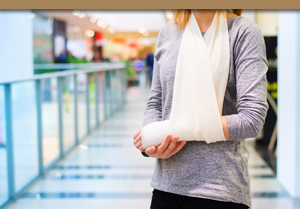Once liability is proved by preponderance of the evidence, the next step is to prove damages. Proof of liability does not by itself presume damages. A defendant can be liable but may have caused no damages, thereby entitling the plaintiff to nominal damages only (one dollar only). In a personal injury case, damages may be proved by showing that the plaintiff was injured and that the injuries were caused by the acts of the negligent party. This can be proved, among other ways, via witnesses; photographs of the injuries; and medical records describing the injuries, diagnoses made, causation, and treatments prescribed. The severity or mildness of the injuries defines the compensation that is owed.
The injuries can range from mere bruising to musculoskeletal and organ injuries to neurological injuries, including brain injuries. As one can imagine, mere bruising may take days to heal, whereas injuries to the neurological system of the body may have permanent consequences. The longer a person has to deal with the symptoms and disabilities of the injuries, the more compensation he would be entitled to in his claim against the defendant.
An important consideration here is the victim’s pain and suffering. In that regard, the California Supreme Court has stated that: “In general, courts have not attempted to draw distinctions between the elements of ‘pain’ on the one hand, and ‘suffering’ on the other; rather, the unitary concept of ‘pain and suffering’ has served as a convenience label under which a plaintiff may recover not only for physical pain but for the fright, nervousness, grief, anxiety, worry, mortification, shock, humiliation, indignity, embarrassment, apprehension, terror, or ordeal.
Admittedly these terms refer to subjective states, representing a detriment that, nevertheless, is a genuine one that requires compensations, and the issue must be resolved by the ‘impartial conscience and judgment of jurors who may be expected to act reasonably, intelligently, and in harmony with the evidence’” (Captelouto v. Kaiser Foundation Hospitals, 7 Cal.3d 889, (892) 893-1972).
In other words, to the degree that the injuries have limited or diminished the enjoyment of life, denied the victim participation in the activities of daily living, and caused the victim pain, he/she should be entitled to compensation for all the losses suffered. On the day of trial, the jury will be instructed to take all the pain and limitations into account and decide on a verdict accordingly.




